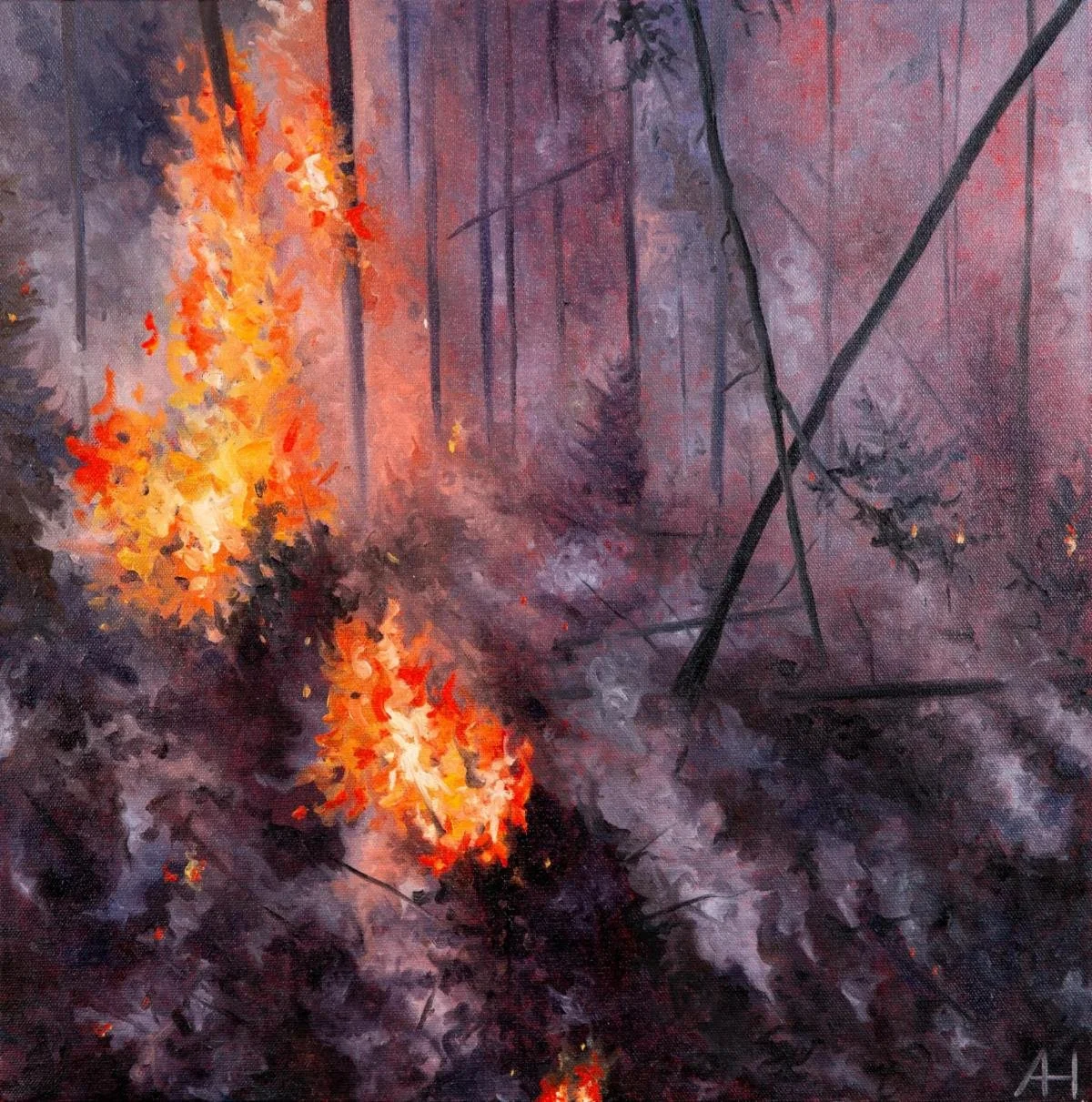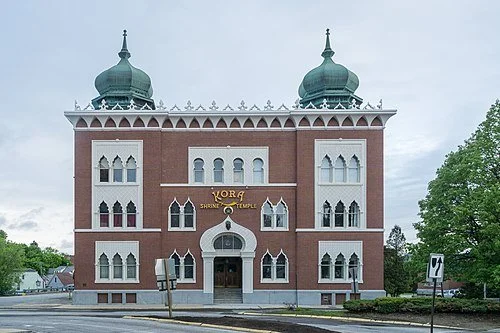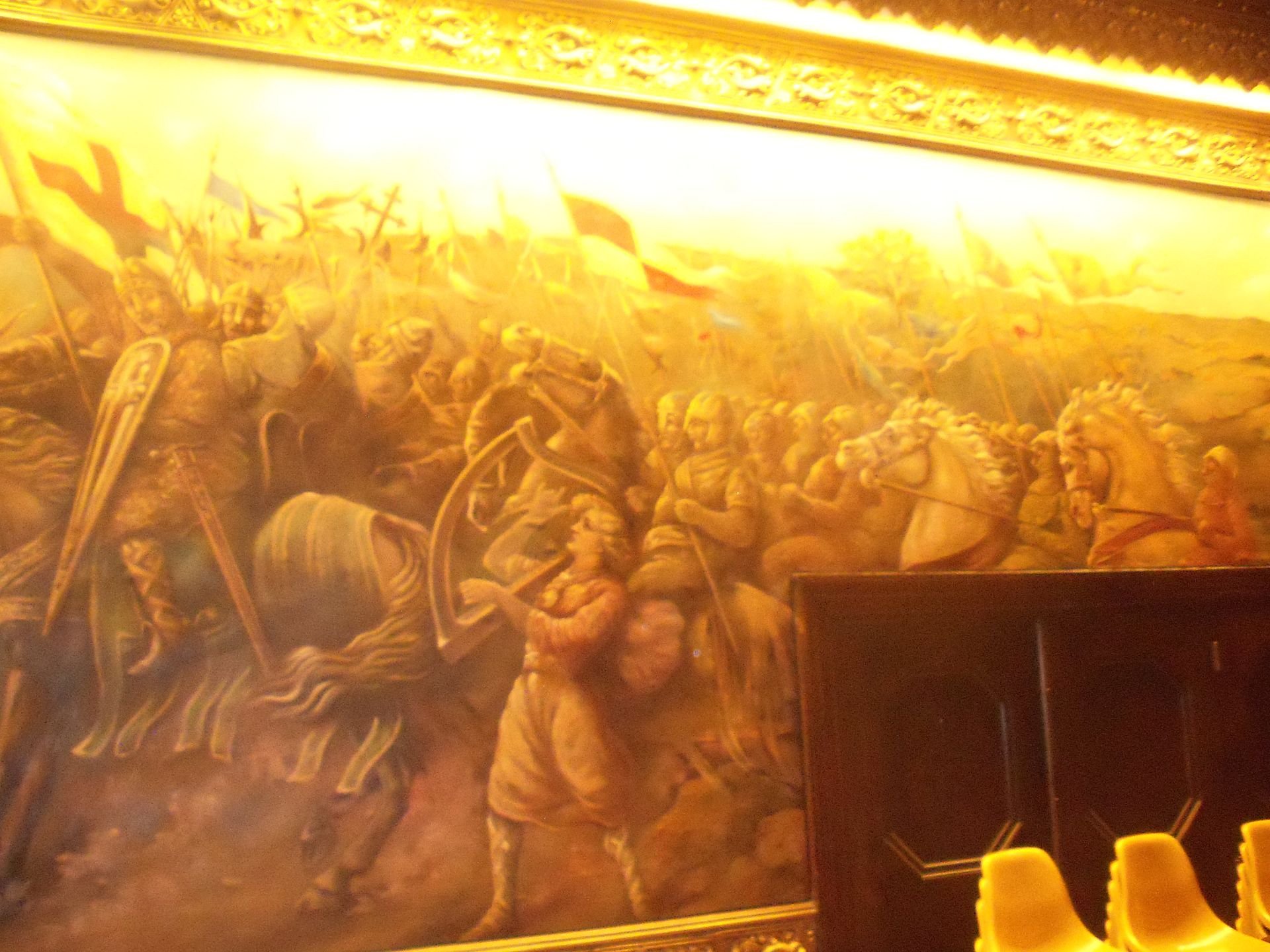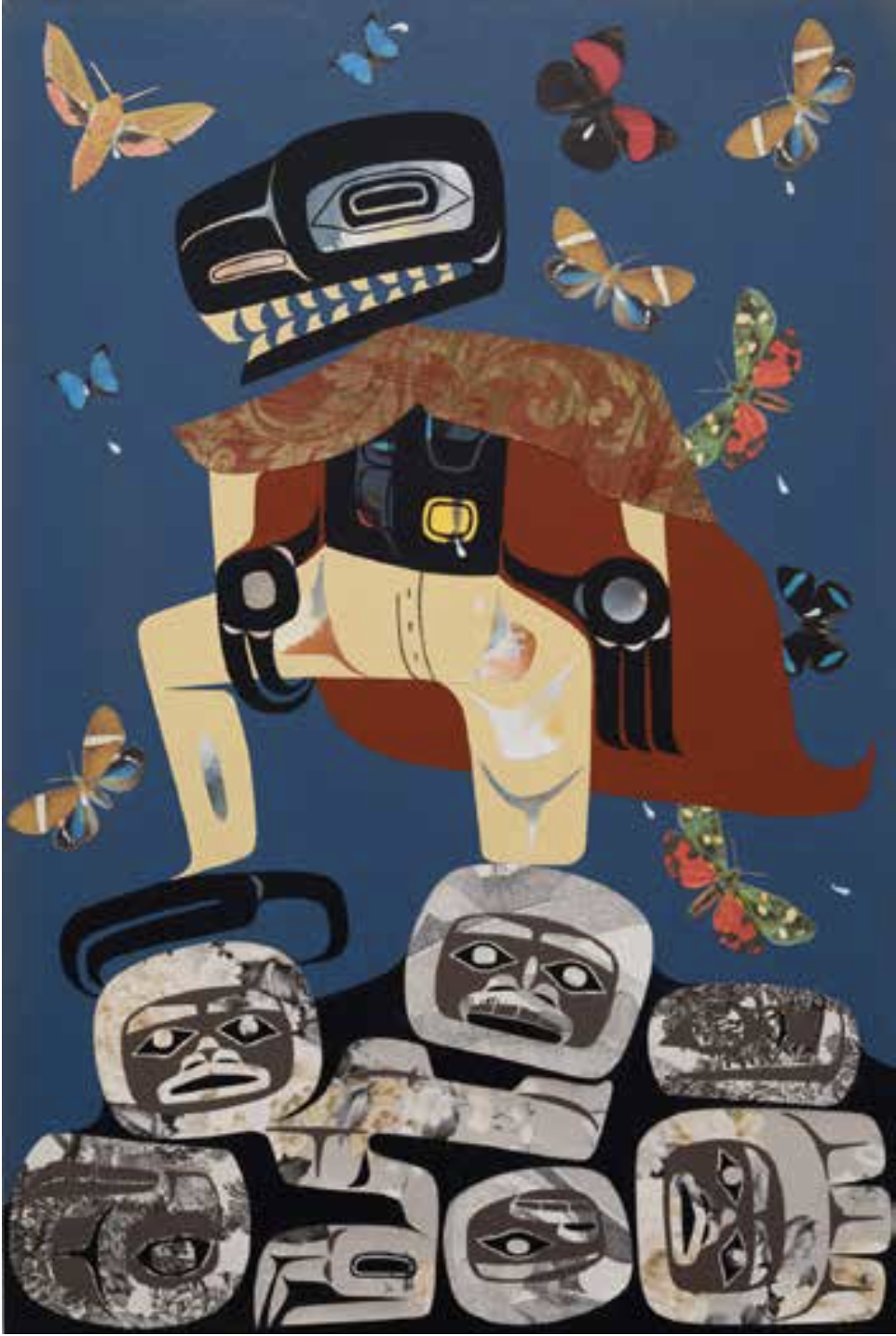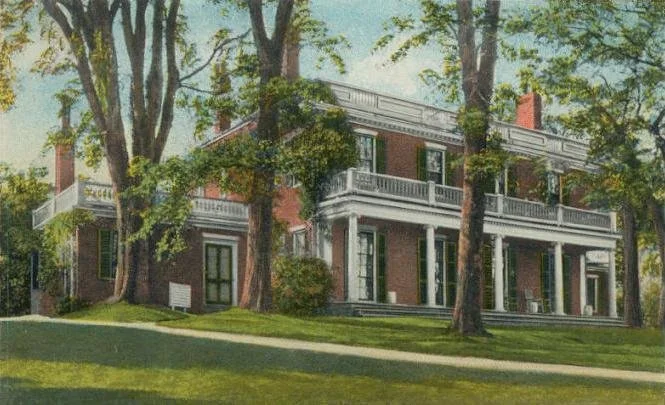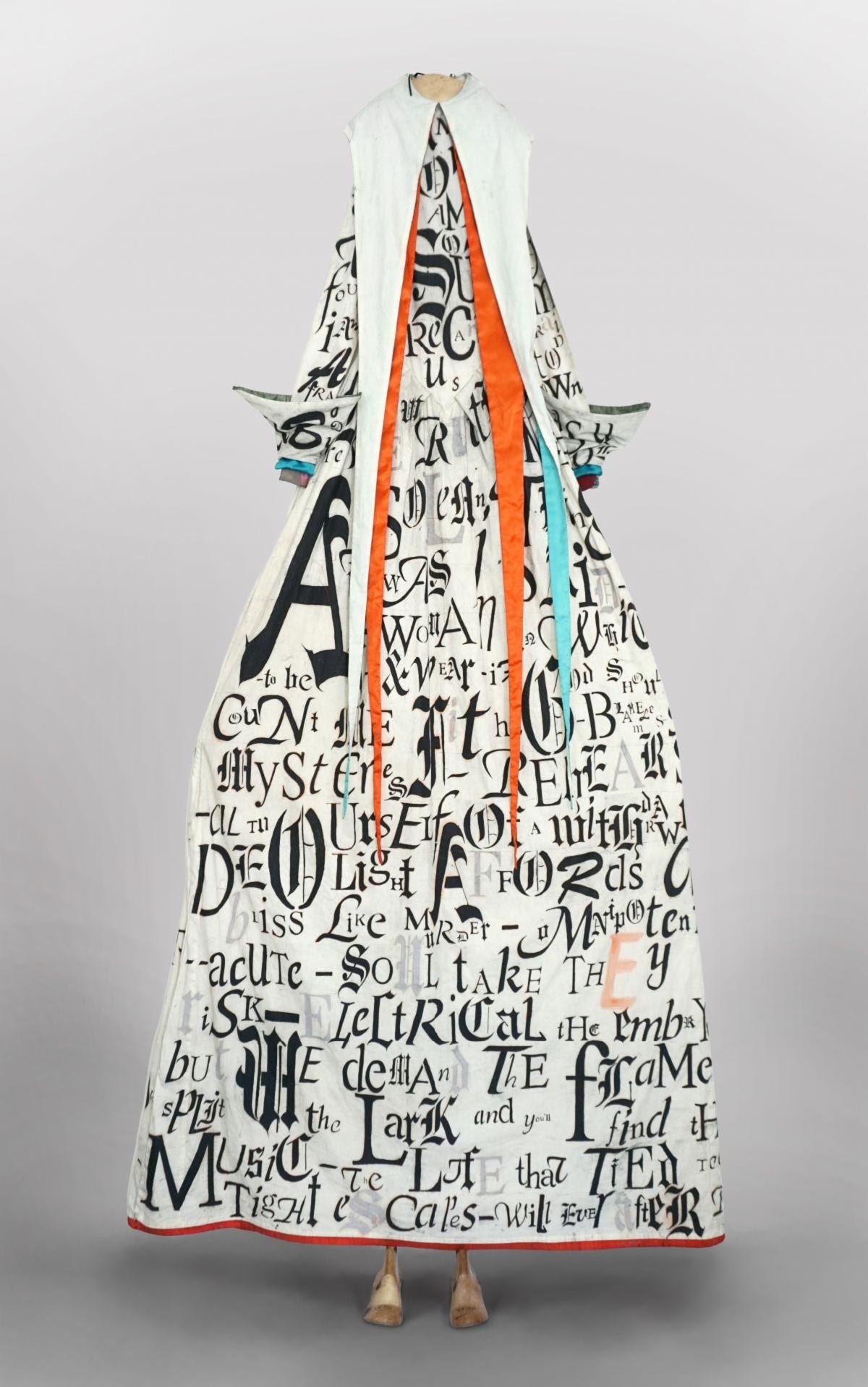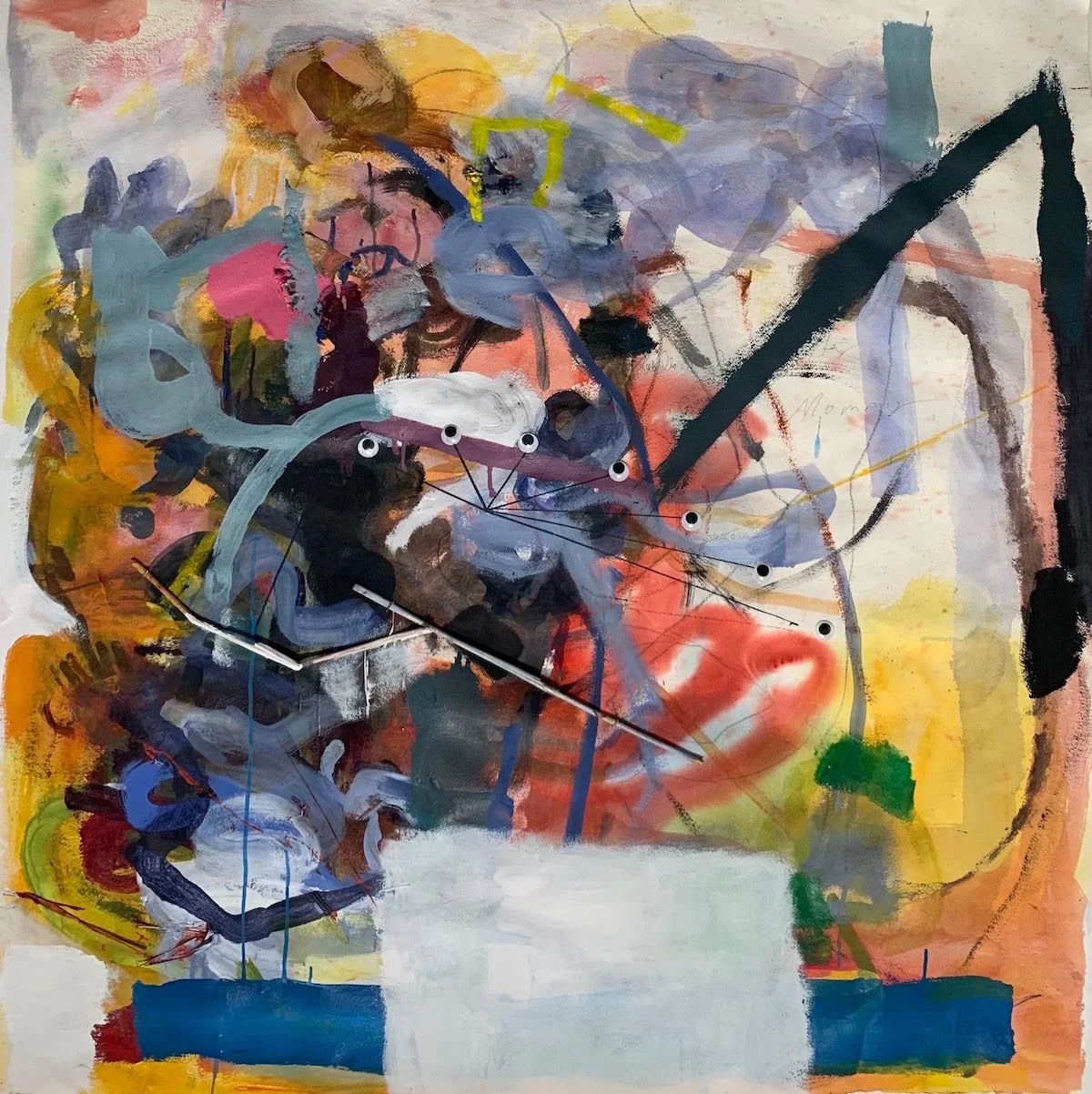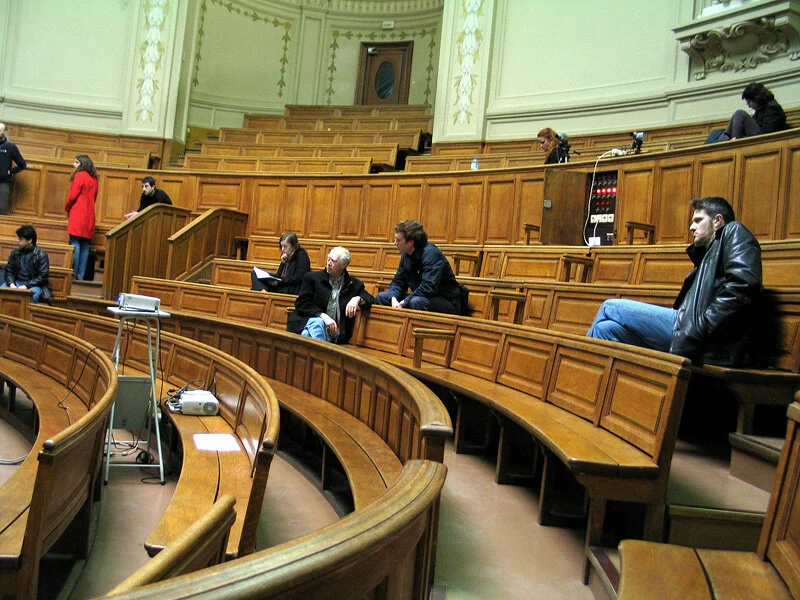
In Lewiston, ‘critical inquiry’ and weird Kora Temple
“Fires of Blaine County” (oil on canvas), by Amelia Hawkins, in the show “Senior Thesis 2024,’’ at the Bates College Museum of Art, Lewiston, Maine.
— Image courtesy: Bates College Museum of Art
The museum explains:
The museum says that the show is “the culmination of eight students' time at the college. Soon-to-be graduates Amelia Hawkins, Yuri Kim, Avery Mathias, Miguel Ángel Pacheco, George Peck, Olivia Rabin, Emma Upton and Joseph Vineyard present their work in painting, performance, digital animation, mixed media and more. The emphasis of the program is on creating a cohesive body of related works through sustained studio practice and critical inquiry.’’
The Kora Temple, in Lewiston, built in 1908 by the Ancient Arabic Order, Nobles of the Mystic Shrine, a fraternal organization affiliated with Freemasonry and are known for their charitable works such as the Shriners Hospitals for Children, which provide free medical care to children. The Kora Temple serves as a ceremonial space and clubhouse for the Shriners. The building was added to the National Register of Historic Places in 1975 for its distinctive Moorish-inspired architecture.
Portion of large mural in the Kora Temple’s dining hall.
— Photo by SarekOfVulcan
But it usually doesn't usually last long
“Infatuation” (acrylic, wallpaper on canvas), by Allison Bremner, at Bates College (Lewiston, Maine)) Museum of Art.
— Image courtesy of artist, who is of Alaskan Native American background.
Hathorn Hall, at Bates College
— Photo by Odwallah
Textile mills in Lewiston along the Androscoggin River about 1910. The city became a major industrial center in the mid-19th Century, first with sawmills, then with textiles. Money from the latter helped found Bates College, in 1864. Many of the workers were of French-Canadian background, and French used to be widely spoken in the city.
Sadly, Maine’s second largest city, after Portland, became nationally know for Robert Card’s mass shooting there on Oct. 25. that killed 18 people in the normally peaceful place.
New England on the rocks
“Rock Doxology’’ (oil on canvas), by Marsden Hartley (1877-1943), at the Cape Ann Museum, Gloucester, Mass. While Hartley lived in many places, including Europe, he was born in the Maine mill town of Lewiston (where he had an unhappy youth) and died in Ellsworth (near the resort town of Bar Harbor) and in his last decades called himself “The Painter of Maine.’’
Rocks sure are icons of New England!
Ellsworth’s Col. John Black House, built 1824–1827 after a pattern book design by Asher Benjamin; now part of Woodlawn Museum. Shipping, shipbuilding, fishing and manufacturing made many people rich on the Maine Coast in the early and mid 19th Century, and many of their gorgeous houses are still standing.
Wearing word art
“Omnipotence Enough (Emily Dickinson)’’ (oil paint on fabric, wooden yoke and shoe lasts), by Lesley Dill, in her show “Lesley Dill: Wilderness, Light Sizzles Around Me,’’ at the Bates College Museum of Art, Lewiston, Maine, Jan. 28-March 26.
Among other things, Ms. Dill explores "the voices and personas of the American past,’’ including "inspiration in the poetry, prose, and declarations of early New England figures….” such as the great poet Dickinson (1830-1886).
Throw it all out there
“Hey Mommy!” (watercolor, acrylic, hay, child's toy and staples on Arches paper), by Vermont-based Renee Bouchard, in her show “Allegory of Prudence,’’ at LAArts Gallery, in Lewiston, Maine, through Jan. 14.
The title of the show is a homage to a painting by the great Venetian painter Titian (c 1506-1576) She tells the gallery:
“I am constantly playing with this idea {of high art} by allowing nontraditional materials like natural and human made objects into my paintings. Aiming to transcend the materials, I walk over them to flatten them, staple and glue them on the surface. "
She gives her bio:
“Born in 1976 to French Canadian parents, Bouchard has lived throughout New England for most of her life. She studied at the Cleveland Institute of Art, and graduated from the Maine College of Art in 1999. She received her MFA in visual art from the Vermont College of Fine Arts in 2021, when she was nominated for fellowships from the Dedalus Foundation and the College Art Association. She has received grants, awards, and residencies from institutions including the Maine College of Art, the Vermont Arts Council, the Robert Rauschenberg Foundation, the Cooper Union, the Kate Millett Art Colony for women, and the Vermont Studio Center.’’
The Kora Temple is an historic Masonic building in Lewiston. It was built in 1908 by the Ancient Arabic Order, Nobles of the Mystic Shrine. “The Shriners’’ are a fraternal organization affiliated with Freemasonry and known for their charitable works, such as the Shriners Hospitals for Children, which provide free medical care to children. The Kora Temple is a ceremonial space and clubhouse for the Shriners. The building was added to the National Register of Historic Places in 1975 for its distinctive Moorish-inspired architecture.
Lewiston, an old mill town, is best known as home of the prestigious liberal-arts institution Bates College.
Taking in city life
“City Hall Picket Line” (pencil and gouache), by Joseph Delaney (1936), in the show “Joseph Delaney: Taking Notice,’’ at the Bates College Museum of Art, Lewiston, Maine.
The museum says:
“African American artist Joseph Delaney (1904-1991) took notice of life around him. He was drawn to figurative art and lively scenes of urban life, and his work focused primarily on the people and environment of New York City, the place where he lived much of his adult life. Delaney was an acute observer of people and their activities, and he recorded them, sometimes in paintings, but more often in works on paper—drawings, pen and ink washes, watercolors, and in the notebooks that he carried and drew in everywhere he went.
“Delaney, who created thousands of works in a life spanning every decade of the twentieth century, was recognized but never celebrated during his life. Since that time, institutions and collectors have increasingly taken notice of his work, which is now in collections including the Art Institute of Chicago and the Metropolitan Museum of Art.
“Taking Notice’’ is the first exhibition in New England devoted to the work of Joseph Delaney. Drawn primarily from the extensive holdings of the University of Tennessee and complemented with several works from private collections and the Bates Museum of Art, it features paintings and many works on paper, representing a breadth of subjects about life in the city that fascinated Delaney during his prolific life, including parades and protests, figure drawings and portraits, and monuments and parks in Manhattan.’’
John O. Harney: Pressing on through the pandemic
BOSTON
From The New England Journal of Higher Education, a service of The New England Board of Higher Education (nebhe.org)
A little of what we’ve been following …
Counting heads. New enrollment figures show higher education reeling under the weight of COVID-19 and a faltering economy on top of pre-existing challenges such as worries that college may not be worth the price. A month into the fall 2020 semester, undergraduate enrollment nationally was down 4 percent from last year, thanks in large part to a 16 percent drop in first-year students attending college this pandemic fall, according to “First Look” data from the National Student Clearinghouse Research Center. In New England, the early data suggest New Hampshire and Vermont were among the handful of U.S. states enrolling more undergraduates than last fall, while Rhode Island reported a nearly 16 percent drop.
At community colleges, freshman enrollment sunk by nearly 23 percent nationally, the clearinghouse reports.
Interestingly, before COVID hit and when so-called “Promise” programs were in full stride, 33 public community college Promise programs across the U.S. showed big enrollment success with their free-college models, according to a study released recently in the Educational Evaluation and Policy Analysis, a peer-reviewed journal of the American Educational Research Association. Such programs were “associated with large enrollment increases of first-time, full-time students—with the biggest boost in enrollment among Black, Hispanic and female students,” the study found, adding, “The results come as the economic impact of the Covid-19 pandemic is leading states to tighten higher education budgets, as low-income students are forgoing their postsecondary plans at higher rates this fall than their wealthier peers, and as community colleges are experiencing larger enrollment declines than four-year universities.”
On the other hand, a report from our friends at the Hildreth Institute examines 22 statewide, free-tuition programs established in the past decade, and finds that most do not address the real barriers that prevent many students from getting a higher education credential. The report notes that tuition and fees represent just 24 percent of the cost of attending a community college and 40 percent of the cost of attending a public four-year university. Beyond tuition, students struggle with necessities like textbooks, computers, software, internet access, housing, food and transportation. Moreover, “the lower the income of a student, the less likely they are to benefit from existing tuition-free programs, known as ‘last-dollar’ scholarships, which cover only the portion of tuition and fees that are not covered by existing financial aid,” the Hildreth report notes.
Digital futures. The ECMC Foundation awarded the Business-Higher Education Forum (BHEF) $341,000 to fund the Connecticut Digital Credential Ecosystem Initiative, in partnership with NEBHE. A network of companies, community colleges, government agencies and other stakeholders, led by BHEF, will develop new pathways to digital careers, particularly for individuals unemployed due to COVID-19. BHEF will help community colleges issue industry-validated credentials to support transparent career pathways across Connecticut and the surrounding region. Participating employers will approve the knowledge, skills and abilities for these credentials, thus building recruitment and hiring links for students who complete the credential. The idea owes much to the work and recommendations of NEBHE’s Commission on Higher Education & Employability.
Organizing. I was happy to attend the virtual annual conference of the Hunter College National Center for the Study of Collective Bargaining in Higher Education and the Professions, its 47th annual conference, this time held virtually due to COVID. The topic was “Inequality, Collective Bargaining and Higher Education.” It was a goldmine of perspectives on equity, antiracism and labor rights.
Among bright spots, talk of a possible student loan debt jubilee and increasing moves by campus CEOs to resist pay raises. Bill Fletcher, former president of the advocacy group TransAfrica and senior scholar with the Institute for Policy Studies, recounted the formation of labor organizing in the U.S. from America’s original sins of annihilating Native Americans and enslaving Africans through the birth of trade unionism and social justice efforts like Occupy and the National Education Association’s Red for Ed. We don’t need white allies, he added, but rather white comrades like John Brown on the frontlines.
Touting Joe Biden’s higher-education platform, Tom Harnish, vice president for government relations at the State Higher Education Executive Officers Association and a faculty member at George Washington University, offered basic advice: If you want better higher-education policy, get out and vote and put better people in office.
In a session on the evolution of labor studies, speakers noted that many labor-education programs have been folded into management schools or sometimes taught under the guise of the history of capitalism so as to attract students. We have to warn students that this is not the place if you’re aspiring to an HR position, one said.
Purdue dropping program in Lewiston, Maine. No higher-education models seem immune to COVID-19. Recently, Purdue University Global announced it is dropping its physical presence in Lewiston, Maine, when its lease expires in March. In spring 2017, Purdue University acquired most of the credential-granting side of the then-for-profit Kaplan University, as part of the Indiana-based public research university’s effort to engage the fast-growing adult student market. Kaplan had about 32,000 students taking courses online or at one of more than a dozen physical campus locations, including Lewiston and Augusta, Maine. The Lewiston building had been empty due to COVID. The Augusta building reportedly will continue to house the nursing program. Kaplan University, by the way, converted to nonprofit status as part of the deal.
See you in better times …
John O. Harney is executive editor of The New England Journal of Higher Education.
